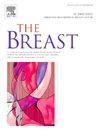在乳腺癌患者中实施模型知情的他莫昔芬精确剂量:一项前瞻性干预研究。
IF 5.7
2区 医学
Q1 OBSTETRICS & GYNECOLOGY
引用次数: 0
摘要
他莫昔芬是一种雌激素受体拮抗剂,用于雌激素受体阳性乳腺癌的辅助治疗。它被CYP2D6转化为内毒素,这是它最活跃的代谢物。患者血浆内氧芬浓度本文章由计算机程序翻译,如有差异,请以英文原文为准。
Implementation of model-informed precision dosing for tamoxifen therapy in patients with breast cancer: A prospective intervention study
Tamoxifen is an estrogen-receptor (ER) antagonist, used as adjuvant treatment of ER-positive breast cancer. It is converted by CYP2D6 into endoxifen, its most active metabolite. Patients with endoxifen plasma concentrations <16 nM face a higher risk of recurrence. The use of a priori model-informed precision dosing (MIPD) may lead to faster target attainment and thus potentially improve patient outcomes.
In total, 106 evaluable patients were prospectively included in this single-arm MIPD-intervention study. Patients received a model-predicted tamoxifen dose when starting tamoxifen-treatment (65.1 % of patients received 20 mg, 16.0 % received 30 mg and 18.9 % received 40 mg). Seventy-five percent of the 40 mg group was predicted to be unable to reach the threshold of 16 nM despite receiving the highest registered dose. After attaining steady-state, 84.0 % of patients reached endoxifen levels ≥16 nM, which was not significantly higher compared to a historical control cohort (77.9 %, p = 0.17). The model showed adequate performance and correctly identified patients requiring 40 mg tamoxifen. Endoxifen samples that were acquired 4–6 weeks after treatment initiation, are informative of steady-state endoxifen levels and can be used to inform MIPD and adjust tamoxifen dosing prior to steady-state attainment.
In this first MIPD implementation study for patients treated with tamoxifen, MIPD did lead to more patients achieving endoxifen levels ≥16 nM as compared to the one-dose-fits-all strategy, albeit insignificant. This may partly be explained by a larger proportion of patients who were recommended to switch to an aromatase inhibitor (AI) in the intervention cohort. In conclusion, MIPD seems beneficial compared to one-size-fits-all-dosing, but TDM still remains an important addition.
求助全文
通过发布文献求助,成功后即可免费获取论文全文。
去求助
来源期刊

Breast
医学-妇产科学
CiteScore
8.70
自引率
2.60%
发文量
165
审稿时长
59 days
期刊介绍:
The Breast is an international, multidisciplinary journal for researchers and clinicians, which focuses on translational and clinical research for the advancement of breast cancer prevention, diagnosis and treatment of all stages.
 求助内容:
求助内容: 应助结果提醒方式:
应助结果提醒方式:


